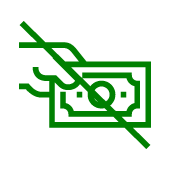We got you a birthday present — peace of mind. Don’t let another year pass without starting your retirement savings.
Key Features
-
 Competitive Dividends
Competitive Dividends
-
 Tax Advantages1
Tax Advantages1
-
 No Setup or Annual Fees
No Setup or Annual Fees
- Competitive dividends above standard savings rates
- Traditional and Roth IRA options
- No setup fees
- No monthly or annual maintenance fees
- Annual contribution limits apply (see current contribution limits; $6,000 as of 2019)
- Additional $1,000 "catch-up" contribution allowed for ages 50+
- Funds can be used to purchase share certificates within IRA
- $250 minimum deposit to open
When do you want to enjoy your tax advantage? A traditional IRA can provide tax relief today, while a Roth IRA has the potential for the most tax benefit at the time of retirement.
Traditional IRA
- No income limits to open
- No minimum contribution requirement
- Contributions are tax deductible on state and federal income tax1
- Earnings are tax deferred until withdrawal (when usually in lower tax bracket)
- Withdrawals can begin at age 59½
- Early withdrawals subject to penalty2
- Mandatory withdrawals at age 72
Roth IRA
- Income limits to be eligible to open Roth IRA3
- Contributions are NOT tax deductible
- Earnings are 100% tax free at withdrawal1
- Principal contributions can be withdrawn without penalty1
- Withdrawals on interest can begin at age 59½
- Early withdrawals on interest subject to penalty2
- No mandatory distribution ages
- No age limit on making contributions as long as you have earned income
1Subject to some minimal conditions. Consult a tax advisor.
2Certain exceptions apply, such as healthcare, purchasing first home, etc.
3Consult a tax advisor.
Retirement covered? Good. Now it’s time to save for your child’s education. A Coverdell ESA offers tax benefits, dividends, and financial assurance for your future grad.
- Set aside funds for your child's education
- No setup or annual fee
- Dividends grow tax-free
- Withdrawals are tax-free and penalty-free when used for qualified education expenses1
- Designated beneficiary must be under 18 when contributions are made
- To contribute to an ESA, certain income limits apply2
- Contributions are not tax deductible
- $2,000 maximum annual contribution per child
- The money must be withdrawn by the time he or she turns 303
- The ESA may be transferred without penalty to another member of the family
- $10 minimum deposit to open
1Qualified expenses include tuition and fees, books, supplies, board, etc.
2Consult your tax advisor to determine your contribution limit.
3Those earnings are subject to income tax and a 10% penalty.
1Consult a tax advisor.


